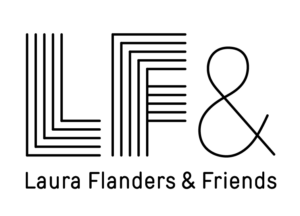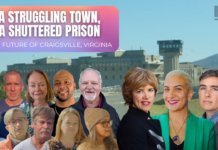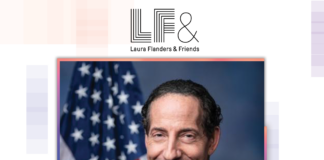In a world where lies travel at the speed of light, truth struggles to keep up. From AI-generated deep fakes to lightning-fast social media rumors, disinformation is reshaping our reality. In the wake of Donald Trump’s shooting, falsehoods flooded our feeds faster than facts. The problem of disinformation, the deliberate spread of false or misleading information, isn’t new, but the stakes are high in this critical election year. In this monthly installment of “Meet the BIPOC Press”, we ask: Who are the targets of disinformation in the run up to the 2024 election and why? Joining Laura are Tamoa Calzadilla, the editor and chief of Factchequeado, a collaborative initiative to combat mis- and disinformation targeting Latino and Spanish-speaking communities. Esosa Osa is the founder of Onyx Impact and the former Deputy Executive Director of Fair Fight Action, the voting rights organization founded by Stacey Abrams. Esosa has just released the first report of its kind looking at disinformation specifically in Black online spaces. Kadia Tubman is a disinformation correspondent for Scripps News, a national broadcast news channel based in Atlanta. What is media and government’s role in halting the spread of disinformation? Our guests share what concerned citizens can do right now to protect fact-based reporting.
“I prepared with my team a toolkit for journalists who cover Latino communities . . . and tools that are not for professional fact-checkers, it is for everyone who wants to detect disinformation . . . It’s collaborative work. We have an alliance with more than 90 media outlets because we understand that we alone can’t do this.” – Tamoa Calzadilla
“What is so fascinating right now in media altogether is that we’re seeing less trust in mainstream media and more trust in influencers, specific voices, specific personalities, especially with apps and social media platforms like TikTok . . . Because of that trust that’s growing with an audience, we’re seeing those influencers being tapped or used by bad actors to spread misinformation.” – Kadia Tubman
“One of the big solutions that Onyx Impact is focused on is investing in Black media in particular and engaging with Black online influencers and gateway platforms as well. We keep saying this word trust, but it is trusted messengers are going to become the key to stemming disinformation as we move forward in this country.” – Esosa Osa
LAURA FLANDERS & FRIENDS
Democracy Under Siege: Battling Disinformation in the 2024 Election
LAURA FLANDERS: Disinformation, the deliberate spread of false or misleading data or stories is dangerous. It can affect the way we relate to one another, and determine the choices we make. Fakes and hoaxes have always been with us. The British, for example, distributed fake messages from George Washington during the War of Independence, supposedly calling the whole thing off. But technology has only made the problem worse, accelerating how fast and how far lies can spread, and how precisely they can be targeted. Theories like those that proliferated after the shooting of Donald Trump can quickly become facts, given the right amount of repetition. This time on our Meet the BIPOC Press monthly feature, we’re going to ask who are the targets of disinformation in Election 2024 and what can be done to protect fact-based journalism. With me, Tamoa Calzadilla, the editor-in-chief of Factchequeado, a collaborative initiative to combat mis and disinformation that targets Latino and Spanish speaking communities. She’s an award-winning investigative journalist from Venezuela, whose work in the US focuses on news literacy, conspiracy theories, and hate. Also Esosa Osa, she is the former Deputy Executive Director of Fair Fight Action, the voting rights organization founded by Stacey Abrams, and the founder of Onyx Impact, which just released a first-of-its-kind report, looking at disinformation specifically in Black online spaces. And finally with us is Kadia Tubman, disinformation correspondent for Scripps News, a national broadcast news channel based in Atlanta. Formerly Kadia was the managing editor for diversity, equity and inclusion for Insiders Global Newsroom, and a national politics reporter at Yahoo News. Well welcome all, I am so glad to have you. Kadia, let’s start with you. Disinformation Officer, I mean, there’s a whole beat now dedicated to this story. How do you define disinformation, that’s distinct from just good old lies?
KADIA TUBMAN: It’s not just a matter of lies that we see, or that we’re sharing, or we’re telling each other, or we’re spreading around. It’s actually an intentional act to confuse people. And in this day and age, as you already started to say and to lean on, is that when we’re so social and so accessible to information, anyone could be a target for disinformation, but as it goes, anyone can be the person spreading it. But it absolutely starts with intent.
LAURA FLANDERS: Esosa, coming to you, I mean, I remember stories of GOP, mostly GOP operatives, in Democratic-leaning Black neighborhoods in places like Pennsylvania, even New Jersey, being caught distributing flyers in Black churches and Black neighborhoods, saying that the election was going to be on a different day than it was actually going to be on, that’s old. But you’re looking specifically at what’s happening now. What are you seeing?
ESOSA OSA: Well, as we see innovations in technology and generative AI and what have you, we see the cost of disinformation really approaching zero, and with some bad actors even being paid to spread disinformation, while the cost of accessing truth is becoming more and more expensive every year. And so we’re really focused on some of the, you know, narratives that we see targeting towards Black communities, where you know, the polling hours may be intentionally incorrect. It may be spreading disengaging content, divisive content, in Black online spaces.
LAURA FLANDERS: So Esosa, what do you mean that it is getting more expensive to get actual facts, I hate that phrase, but facts, and easier to get everything else?
ESOSA OSA: One of the things that generative AI allows us to do is to create very personalized content very, very quickly at almost no cost, right? And so you can create disinformation narratives online, hyper-personalized narratives, incredibly quickly. We are also seeing that folks are, that AI platforms are actually creating headlines and news articles that are more believable than the actual, than actual journalist-based headlines. And so the cost of trying to decipher what is true, right, is going to by default increase. You need to find trusted messengers, that’s going to take time. We need to subscribe to different news organizations, that’s going to cost money, right? You need to make sure you’re checking sources far more often, that’s again, going to take time. And so we’re really in a brand-new environment of trying to decipher what is true and what is not.
LAURA FLANDERS: And it is sometimes true that reality is crazier than fiction. Coming to you Tamoa, you’re looking specifically at Spanish-speaking communities, why?
TAMOA CALZADILLA: We are focusing in Spanish speakers communities because we consider that that communities are vulnerable, because they are more used, they are more relied to social media to inform themself, with messaging apps like WhatsApp, YouTube, Facebook, you know, and for example, WhatsApp is an encrypted system and you cannot have to access that. What’s going on there, what is the conversation there, and the narrative of disinformation there? And it’s the reason why in Factchequeado, we are building an ally, an alliance, with other media outlets and organizations that are working for Spanish speakers.
LAURA FLANDERS: So just to tease out that again, I’m hearing you’re saying that the Spanish-speaking community is more likely to use closed systems, or even encrypted systems like WhatsApp, why?
TAMOA CALZADILLA: Because of the background. Because in Latin America, we’re communicating with our families and friends by WhatsApp, for example. And it’s the same behavior when you are in the United States because you are in contact with all your families on. And Spanish speakers in Spain and in Latin America, you know? And the studies show that Latinos are more relied to WhatsApp that other groups, for example, and they are more relied to use YouTube and Facebook to participate in politics discussions, to have conversations, and to share disinformation and misinformation.
LAURA FLANDERS: Coming back to you, Kadia. We’re not just talking about online, like there’s good old radio, there’s of course broadcast television, there’s all sorts of possible sources for information. We hear a lot about bots, kind of disembodied bots online. But how important are influencers of the flesh and blood variety, and where are you seeing the biggest problems?
KADIA TUBMAN: What is so fascinating right now in media altogether, just taking a step back for a second, is that we’re seeing less and less trust in mainstream media and more and more trust in influencers, specific voices, specific personalities, especially with apps like, and social media platforms like TikTok. People are more likely to say, “I listen to this person for my news,” or, “I trust this voice for my information.” So across the media landscape, we’re seeing more and more trust in influencers and in personalities. At the same time, because of that trust that’s growing with an audience, we’re seeing those influencers being tapped or used by bad actors to spread misinformation. We’re seeing influencers being flown out to DC, or at least the reports that I’ve been getting, is influencers being flown out to DC, being coached and being taught to talk about politics. Whether they are from battleground states like Arizona or North Carolina, they’re being taught to talk about this, because they’re of course political actors, but also bad actors too, who know that one way to get in front of an audience is through an influencer. Now that doesn’t mean that all influencers have bad intentions, or don’t know what they’re talking about, or can’t be trusted. It does mean that we need to pay a lot more attention to what influencers are saying, who might be motivating them to say these things, or who might be behind them, and whether we can actually trust their information, or verify it for ourselves.
LAURA FLANDERS: And then of course, there’s AI, right Kadia? I mean, AI creates characters who could be your unknown influencer.
KADIA TUBMAN: Right, which is even wilder. I mean, talk about technology on technology, or just getting super meta. We’re now going to probably see, and we are likely already seeing AI influencers, AI bots, impersonating influencers, impersonating people to pretend that they’re influencers that they should trust and follow, and spread their misinformation.
LAURA FLANDERS: Coming back to you Esosa, what did you see in Georgia, if there are stories that you want to tell from that campaign, when you were working with Stacey Abrams, and what are you seeing now that you think would sort of crystallize the problem for people watching and listening to this program?
ESOSA OSA: What we saw in Georgia during the last presidential cycles, a lot of you can imagine, was that initial, what we saw in the US, an initial deluge of election fraud narratives that were, to a degree that we hadn’t really seen before, or at least for quite some time, in the country. And once the November elections ended and the entire focus was on the Georgia runoffs, right? We saw this, just hyper targeting of those narratives to folks in Georgia. And we saw those disinformation narratives morph into the next stage of that, which was, you know, online threats and harassment, especially to Black and brown election workers. And so we’re still seeing the effects of that here in Georgia, not just with the many anti-voting bills that have been passed, but you know, even the state election board, and them trying to just a couple of days ago, you know, increase the number of poll watchers that could be in voting locations by like three times, right? In a random meeting. It’s all kind of flowing from what we saw in 2020.
LAURA FLANDERS: You make a good point that it is hard to counter disinformation with facts. Is that just a function of the way our brains work, or we get tired, or what do we know about that?
ESOSA OSA: Disinformation works in a similar way, regardless of, you know, your background, your income, your party, and that is that the more times that we hear something, the more likely we are to believe that thing is true, and to believe other people believe it’s true as well, right? We substitute repetition for truth. That’s how you teach little kids basically anything, right? And so that truth is, that fill-the-gap issue, telling something that someone, that something they believe is wrong, right? Doesn’t necessarily fill the gap. Fact checking now becomes quite an emotional response. But what we do know works a bit better is highlighting the motivations of, you know, why folks may be spreading these false truths or misleading narratives. Not necessarily trying to debunk those narratives, but saying things instead like, “You know, these folks probably don’t want you to vote,” or, “These folks are trying to take away your power,” or “We know that this person is a grifter,” right? These types of motivation can actually be far more effective in refuting and pushing back on disinformation.
LAURA FLANDERS: Now Tamoa to you, we’ve done some reporting on the multiple vulnerabilities, particularly of the Spanish speaking and migrant population, specifically the immigrant population, whose rights are very unclear. And I want to ask you what you think are the motivations of some of those spreading disinformation in the communities that you’re studying today in this election?
TAMOA CALZADILLA: With the immigration issue, we can see different motivations. For example, the great replacement theory, the immigrants are coming to the United States to go to replace the white voters, et cetera, is to push racism or something like that, and is targeting older people, more conservative people. But when the narrative is about the electoral process with immigrants, immigrants are criminals, or the crime is rising because of the people coming through the Southern border, is with an electoral intention, right? They are voting, they are in the middle of the fraud, plot or something like that. It’s different, but all those narratives are doing damage.
LAURA FLANDERS: We’re hearing that those narratives are working inside the Latino population in this country, a very large voting bloc, a bloc that is growing, a bloc that is growing in sympathy for the Republican candidate this time around. Talk a bit about that phenomenon, and how important misinformation in the circles that you are studying could be to this specific election, and that particular voting bloc.
TAMOA CALZADILLA: Yes, in this particular election, the polarization is with conservative voting among Latinos. In South Florida, specifically South Florida, you can see a phenomenon, the radio shows. The radio shows have some anchors spreading a lot of disinformation, conservative narratives about the abortion until the last month of the pregnancy, comparison with socialist regimes that are dictatorships in Latin America. The relationship between the government and the weaponization of government to control you, to control your life, with the IRS, with your money, with your health. Do you remember when there were masks in the middle of the pandemic, became an issue, a political issue, you know, an ideological issue because, “They want to control me.” That kind of narrative are very popular in South Florida, because people came from dictatorships, from government that really control you, or want to control you.
LAURA FLANDERS: How do we combat any of this? Esosa, I’m getting pretty discouraged here, but you have suggested there are things people can do.
ESOSA OSA: One of the big solutions that Onyx Impact is really focused on, is investing in Black media in particular, and engaging with Black online influencers and gateway platforms as well. Making sure that there’s, we keep saying this word trust in this conversation, but it is that trusted messengers are going to become the key to stemming disinformation as we move forward in this country. That is going to be the most important thing that we can do. Identify local, state, national trusted messengers, both political and nonpolitical, and make sure they’re constantly showing up on these platforms. Make sure their reach is being expanded. Make sure people see them as an authentic source of news and information. And so investing in Black media where, you know, 64% of Black folks in the country still get a lot of their news from Black-owned sources of media. So making sure that they can have a much larger blueprint is, or footprint is one thing. The other thing that we can do actually is quite simple. It is telling folks to make sure that they can fact check, they can, just check your sources before you share something. And you know, research shows that reminding folks to check your sources actually works for 72 hours.
LAURA FLANDERS: Wait, you mean we have to send out that message every 72 hours, because people forget it?
ESOSA OSA: Basically. Look, we all got things to do.
LAURA FLANDERS: We’re all busy. I mean that rush for likes puts a focus on getting something out as quickly as possible, being the first.
ESOSA OSA: And I would also say, as we’re searching, as we become more and more online, we actually need to be a little cautious, train ourselves, train our brains to be cautious of content that elicits a very strong emotional reaction immediately. It very well may be true, but that’s the type of content in particular that we need to just take a step, take a second and double check it, to make sure that it’s accurate. If something is making us very angry, if something is making us very, very, very sad, what have you, just take a beat, double check it, and make sure that it is what it says it is.
LAURA FLANDERS: I want to come to Tamoa. You’ve also made available some sort of explainers and tools for both reporters and receivers of this information. What do those look like? What are you recommending people do?
TAMOA CALZADILLA: I prepared with my team at Factchequeado a guide, a toolkit for journalists who cover Latino communities with data, with some particular issues about these groups, these communities, and 16 tools, that is not for professionals fact checker, it is for everyone who want to detect this information, combat, counteracting some, debunking some images or videos, you know? And I think that is our part in this story, in this particular year in the middle of this campaign, with a lot of disinformation that the people, the audiences have, how to understand, how to consume all of this. And for journalists, this is a group of tools useful in your newsroom, small, large, and media literacy. I think that the most important thing, is that this is a problem that we can do these together. It’s a collaborative work. We have an alliance with more than 90 media outlets, because we understand that we alone, we can’t do that.
LAURA FLANDERS: There is a lot that we can do as individuals, and as reporters I always say, if you don’t want to be too reliant on online sources about what happened, where, when, go places, actually be present. Then you’ll know whether it happened or not. Although there’s no guarantee. Kadia to you, there’s also a role for government and law, and you recently wrote a piece about a case that was in front of the Supreme Court, a win of sorts. I want you to just tell us a little bit about that.
KADIA TUBMAN: So the Supreme Court sent a case back to the lower courts concerning laws that were basically restricting how social media platforms can moderate their content. Now, social media platforms were saying, “Well, this is a violation of our First Amendment rights. You can’t do this,” to states like Florida and Texas. And then Texas and Florida, those states, which have gone heavily after social media companies after Trump was suspended, his account was suspended and then restored, those states are saying, “Well, you’re violating our rights by censoring us, by taking down certain conservative content.” And so that what the case was about. And essentially right now, even though it is in limbo, it is seen as a victory for now for social media companies as they re-litigate this case. However, going into the election season, which was the most important part of seeing the result of the Supreme Court case, was that whether or not we would see a protection for everyday people against the widespread and the wild, wild West is what I call it, of misinformation on social media. Of course we can say that, and we should say that is a personal responsibility of all of us to check our facts, to verify, to help each other verify. But there is also a very important role that the government, that lawmakers play, that policy plays, in making sure that everyday people are protected from misinformation. And there has been a push, not nearly as big enough as experts and researchers have warned, for social media companies to work with lawmakers and researchers to make sure that there is adequate content moderation when it comes to disinformation. I can tell you right now, as someone going through so many conspiracy theories and so much disinformation around the shooting this past weekend at the Trump rally, many of these posts are still up. Many of them may have disclaimers that they’re false, whether they are doctored photos, or language that has completely, it’s basically outright lying. Those posts are still up and they aren’t being taken down. And I know social media companies, in the conversations I’ve had with them, it’s a game of whack-a-mole essentially. They can take something down, but something else will pop up. And so ultimately there is no regulation overall about spreading misinformation intentionally, or disinformation intentionally on social media platforms. But there’s a lot that needs to be done to make sure this is happening. At some point, we can’t leave it up to everyday people to fight their way, because as Esosa said, it’s expensive, and as Tamoa said, it’s going to take a lot of time and energy from everyone. But at the same time, we all need to be in this fight.
LAURA FLANDERS: Well, we have real life politicians that spread misinformation and lies, and some of them at the very top of tickets running for president. So our problem goes from the very real, right down to generative AI, it’s a huge problem. I thank you all for helping us to at least put a finger on it. I like to end these conversations by asking people what they think the story will be that the future tells of this moment. On this particular topic, I feel like the future will be in a very different situation. But Esosa starting with you, what do you think 20, 50, a hundred years from now, people are going to say about us in this moment?
ESOSA OSA: So many of these narratives, so much mis and disinformation. The strategy is to divide, right? And so to push back against it, we really do need to make sure that we are creating messages of unity, of hope, of, of empowerment. And if we can’t do that, we’ll be looking at this time period in 20, 40, 50 years as the time period where we started to slip away from what makes American democracy such a wonderful experiment.
TAMOA CALZADILLA: I think that the same AI that is causing damage with deep fake and something like that, it come to help to journalists, and everybody to understand how to consume that, how to use that to detect disinformation, how to use that, to use for example, hive migration and other tools with AI to combat disinformation. And I think that the future is good, but we have to work a lot and work together.
LAURA FLANDERS: But I love the idea that the very technology that’s hurting us now might help us in the future. Kadia, you buy that?
KADIA TUBMAN: Seven years ago I was talking about user-generated content and the threats that we saw there. Now that’s not even a thing. Now we just talk about content creators and influencers, and AI, generative AI and deep fakes. And so, and that’s a seven-year span. I can only hope that 50 years from now, when I talk to students or my own children, they’ll just say that, “Wow, at least we got smarter.”
LAURA FLANDERS: Kadia, Tamoa, Esosa, so thank you so much for joining me. I’m with you, let’s hope. I’m with you in the hope, we can do better, we will do better, and maybe tech will actually help us. For “Laura Flanders & Friends”, I want to thank you for joining us. Stay kind, stay curious, till the next time. Check out the resources at our website, and for every week’s full uncut conversation, don’t forget you can subscribe to our free podcast. For “Laura Flanders & Friends”, I’m Laura, thanks.
For more on this episode and other forward-thinking content, subscribe to our free newsletter for updates, my commentaries and our full, uncut conversations. We also have a podcast. It’s all at lauraflanders.org.
• ‘A Cautionary Tale:’ How clickbait AI images like ‘Shrimp Jesus’ became a warning against scammers, by Kadia Tubman, Read Here
• Fact Checking the Wild Conspiracy Theories Related to the attempted Trump Assassination, by Katie Sanders, PBS News, Read Here
“Jock-A-Mo” by Cha Wa with Single Lock Records, part of New Orleans’ Muscle Shoals, Learn More / Watch Video
Laura Flanders & Friends is committed to making our programming, website and social media as accessible as possible to everyone, including those with visual, hearing, cognitive and motor impairments. We’re constantly working towards improving the accessibility of our content to ensure we provide equal access to all. If you would like to request accessibility-related assistance, report any accessibility problems, or request any information in accessible alternative formats, please contact us.
















